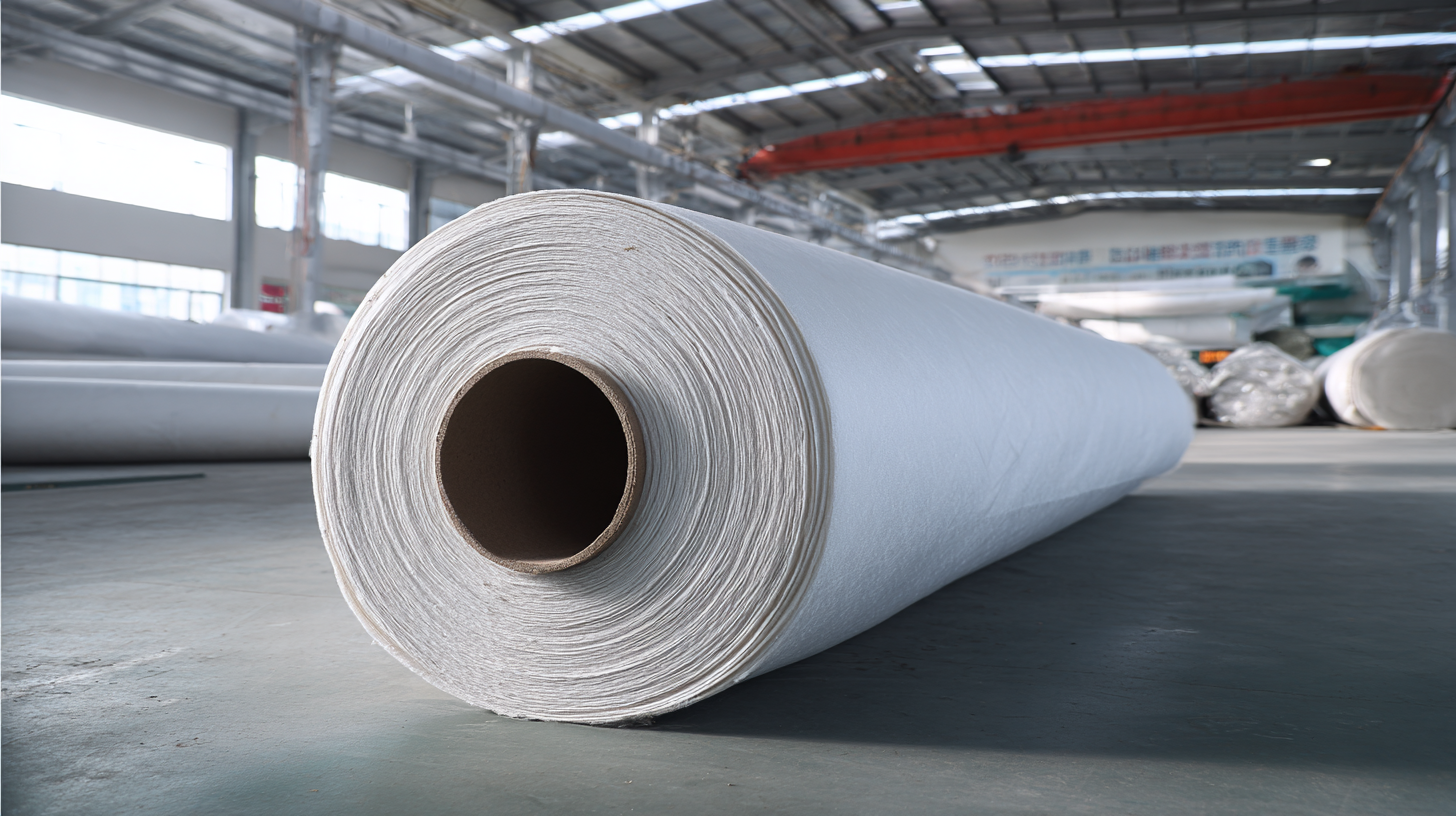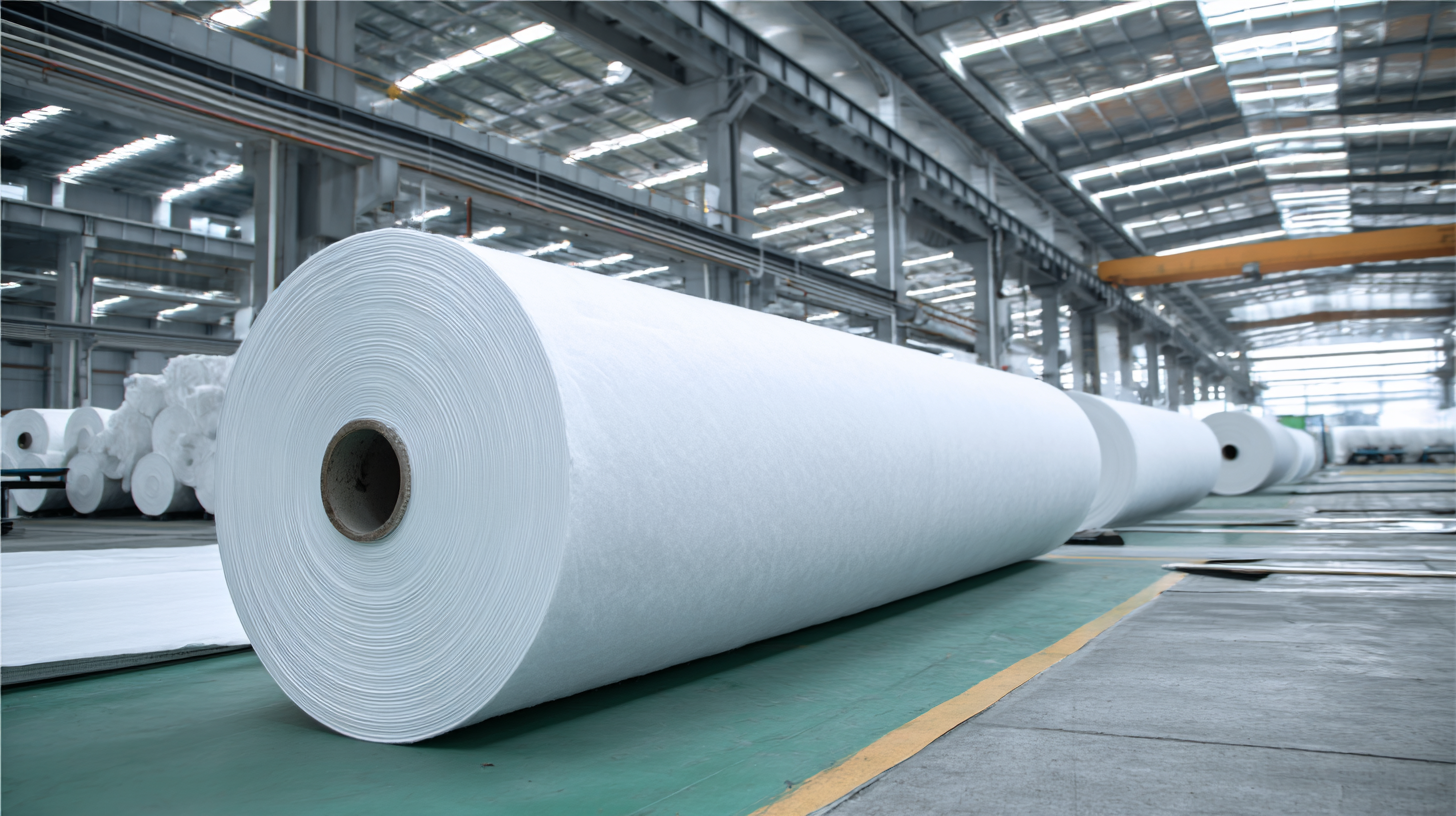Inquiry
Form loading...
- Phone
- E-mail
In recent years, China has emerged as a global leader in manufacturing, particularly in the field of advanced materials like the Geotextile Membrane Non Woven. According to a report by MarketsandMarkets, the global geotextiles market is projected to reach $12.6 billion by 2026, reflecting a compound annual growth rate (CAGR) of 10.6% from 2021 to 2026. This growth is largely driven by increasing demand in infrastructure projects, erosion control, and environmental management. As the world's largest producer of geosynthetic materials, China plays a pivotal role in setting industry standards for quality and innovation. The Geotextile Membrane Non Woven not only provides exceptional durability and performance in various applications, but also exemplifies China's commitment to sustainability and technological advancement in manufacturing. This blog will explore the significance of China's manufacturing prowess in the geotextile sector and highlight examples that showcase the best practices and innovations in Geotextile Membrane Non Woven production.

China's geotextile manufacturing industry has witnessed remarkable growth in recent years, establishing itself as a global leader in the sector. According to a recent report by Grand View Research, the global geotextiles market size was valued at approximately $9.2 billion in 2020 and is expected to grow at a compound annual growth rate (CAGR) of 10.7% from 2021 to 2028. This growth is largely driven by the increasing demand for durable construction materials and innovative civil engineering projects, where geotextiles play a critical role in soil stabilization, erosion control, and environmental protection.

China, holding the largest market share, has significantly invested in technology and production capacity to meet both domestic and international demand. The country's geotextile production is projected to reach over 5 million metric tons by 2025, as reported by the International Geosynthetics Society. Key factors contributing to this rise include a focus on sustainable construction practices and an emphasis on high-performance materials. As China's geotextile industry continues to innovate and expand, it is setting new global standards for quality and efficiency, positioning itself at the forefront of the manufacturing landscape.
In recent years, the innovations in non-woven membrane technology have made significant strides, particularly in applications requiring high performance and sustainability. The development of ultrafiltration (UF) membranes for removing potentially toxic elements marks a vital advancement. This technology utilizes comprehensive bibliometric analysis to enhance our understanding of materials and methods, facilitating their integration into various industrial processes. The focus on improving antifouling performance ensures that these membranes not only meet environmental standards but also extend their usability in demanding conditions.
Moreover, the introduction of eco-friendly air filtration products, such as high-efficiency particulate air (HEPA) filters made from nonwoven basalt fiber and electrospun nanocellulose, showcases the potential of non-woven technology in environmental applications. This pursuit of sustainability extends to innovations in breathable and waterproof fabrics, which leverage multiple manufacturing techniques to combine functionality and resilience. As the industry continues to move forward, the intersection of filtration technology and non-woven materials indicates a promising future for creating solutions that address both performance and ecological concerns.
Geotextile membranes play a crucial role in modern construction, offering a range of benefits that enhance project efficiency and longevity. According to a report by MarketsandMarkets, the global geotextiles market is expected to reach $14.67 billion by 2025, growing at a CAGR of 10.6% from 2020. This rapid expansion underscores the increasing adoption of geotextile membranes in road construction, erosion control, and drainage solutions. Their ability to separate soil layers, facilitate water flow, and provide structural support makes them indispensable in various civil engineering applications.
In the realm of infrastructure development, geotextile membranes are particularly valuable in projects involving highways, railways, and landfill management. The American Association of State Highway and Transportation Officials (AASHTO) emphasizes that incorporating geotextiles can significantly enhance the lifespan of roadways by reducing soil displacement and improving load distribution. Additionally, studies indicate that using geotextile membranes in landfill operations can reduce the risk of contamination and improve leachate management, resulting in more environmentally sound waste disposal methods. Overall, as China's manufacturing sector sets the standard with high-quality geotextile products, their integral role in construction continues to evolve, driving innovation and sustainable practices worldwide.
| Application | Type of Geotextile | Key Benefits | Typical Thickness (mm) | Common Usage Areas |
|---|---|---|---|---|
| Road Construction | Non-woven | Improved drainage, erosion control | 5-10 | Highways, bridges |
| Landfills | Woven | Barrier against leachate, soil stability | 8-12 | Waste management sites |
| Shoreline Protection | Non-woven | Prevention of coastal erosion | 6-15 | Riverbanks, seashores |
| Slope Stabilization | Woven | Increased soil cohesion, reduced erosion | 4-10 | Hillsides, embankments |
| Basement Waterproofing | Non-woven | Moisture control, preventing leaks | 3-7 | Buildings, infrastructure |
China has emerged as a leader in the geotextile industry, showcasing not only its manufacturing power but also a strong commitment to sustainability. The country's approach to producing non-woven geotextile membranes highlights innovative practices that reduce environmental impact while maintaining high quality. Utilizing advanced technologies and eco-friendly materials, Chinese manufacturers are setting a benchmark for the global market. These practices include the recycling of raw materials and the implementation of energy-efficient production processes, which significantly lower the carbon footprint associated with geotextile production.
In addition to material sustainability, China is focusing on the life cycle of geotextiles. Manufacturers are increasingly adopting processes that ensure durability and long-term performance, reducing waste and the need for replacements. Educational initiatives are also in place to raise awareness among consumers and construction professionals about the environmental benefits of using sustainable geotextiles. By championing these practices, China is not only enhancing the quality of its products but also paving the way for a greener future in the geotextile industry, ultimately elevating standards and promoting responsible manufacturing globally.
As global demand for sustainable construction materials continues to rise, China's influence in setting geotextile standards is becoming increasingly significant. According to a recent report by MarketsandMarkets, the global geotextiles market is projected to reach USD 16.3 billion by 2026, growing at a CAGR of 12.2% from 2021 to 2026. With its advanced manufacturing capabilities and technology innovations, China is poised to play a pivotal role in shaping these standards, particularly in the production of geotextile membrane non-wovens, which are gaining traction due to their durability and environmental benefits.
Moreover, China's commitment to enhancing its geotextile products aligns with international standards set by organizations like ASTM and ISO. The nation's robust supply chain and investment in R&D have enabled manufacturers to produce non-woven geotextiles that meet or exceed global quality benchmarks. A study from Technavio highlights that the increasing adoption of geosynthetics in various applications—ranging from infrastructure development to environmental protection—positions China as a leader in establishing technical specifications that promote innovation and sustainability in the geotextile industry. Through collaboration with international partners and adherence to emerging regulations, China is not only expanding its market share but also contributing to global geotextile standards that prioritize quality and environmental stewardship.

